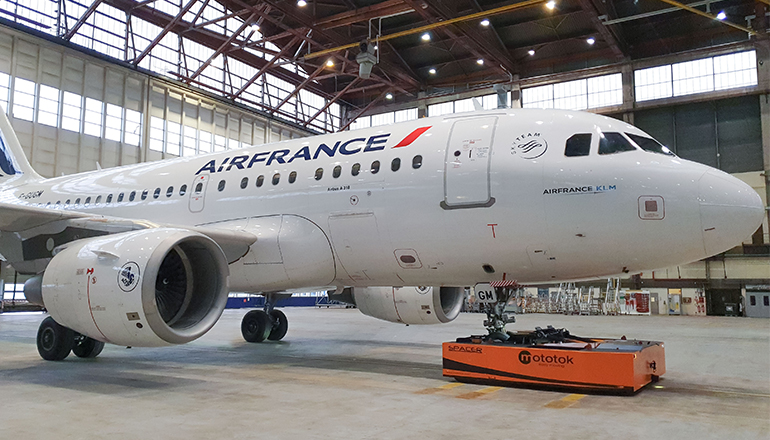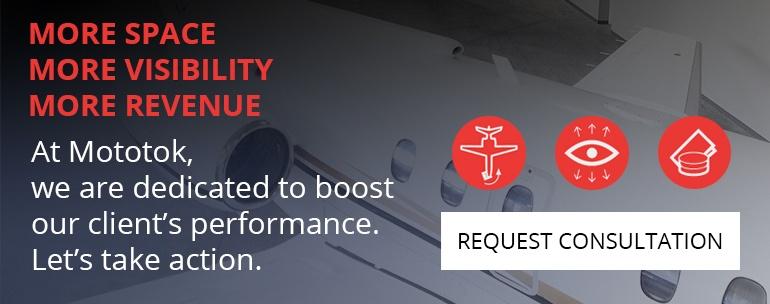It is no coincidence that we did not send out an aviation trends article at the end of 2020; we scarcely knew whether or not there would be any new trends to speak of.
For the most part, the aviation community was broadly interested in staying afloat. But the past twelve months have proven that people's will to move about is a powerful force. Of course, the people's will to quickly get packages to their doorsteps is also powerful! We believe that 2022 will prove to be a year of getting back on track (airlines), exceeding previous historical standards (freight), and implementing advanced technologies.
MRO Trends for 2022
We like to explore all sorts of topics in the Mototok blog, but our core will always be MRO. We like technology-driven storylines because that is what we do. Still, we also need to understand an alarming detail that is partly driving the expansion of so many emerging technologies in aviation: a severe shortage of maintenance technicians in the workforce. And this is not a ‘COVID-19’ thing; we knew about this and were talking about it well before Wuhan was on anybody's radar. The only thing that has changed in the last two years is that it is direr now than before March of 2020.
Emerging Technologies
We have touched on a few of these in previous articles, but they keep coming up because they are the wave of the future.
Drone Inspections-Fuselage and Structure
This is the emerging technology that we expect will not only continue to grow but will likely continue to keep expanding to areas and in ways that we cannot even conceive of yet.
Drones offer the unparalleled capacity to conduct visual inspections in ways that humans cannot replicate. First, they are airborne and will save enormous amounts of time wasted in rigging inspectors to check areas of the airframe that cannot be readily inspected on the ground. The empennage alone takes hours to go over, when you consider using a high-lift, securing safety fall protection, and getting out on the empennage itself if necessary.
However, a drone is programmed to follow specific flight paths at specific speeds. So it passes over exactly where the operator wants it to go, and AI is making them more intelligent with every passing year, able to identify deficiencies rapidly.
Drone Inspections-Engine
The use of drones in aircraft inspection and maintenance is only in its infancy at this point. However, one use for drones being explored is the inspection of engine casings. French startup AGROS has created a system that uses a simple string of lights on an object, in this case, an engine casing, that creates the parameter for the inspection. The drone then acquires the inspectable items and scans it for defects. The whole process is conducted at the click of one button; inspections are recorded and stored in a cloud.
The entire process is entirely autonomous, and the learning curve for the operator is very short. As a result, we can expect that systems like AGROS will become very commonplace, and competition will only improve the quality of products.
Heavier Reliance on Blockchain for Logistics
This has very little to do with overcoming a pandemic, but it is just the way forward in business logistics. We expect that the use of Blockchain-based secure ledgers will permeate the industry in a wide variety of different areas, not just aircraft maintenance.
It offers the maintenance side of aviation the ability to facilitate digital transactions. In addition, since it is a secure ledger that cannot be altered, trust and security issues are addressed in ways that have been difficult to address in the past.
Take a remanufactured engine, for instance. The Rolls Royce engine might be overhauled in the U.S., with parts from the EU and the purchaser residing in Saudi. In the past, it would have been almost impossible to keep track of all of the maintenance history of the engine, parts origins, and certified statements of work. Blockchain technology can bring all of these factors together with real-time visibility of the status of repairs and verification of repairs. In addition, the date and time stamps and electronic signature are unalterable. Also, Blockchain opens the doorway to secure transfers without brokers, eliminating a significant source of costs along the way.
Continued Growth of Additive Manufacturing
Additive manufacturing, colloquially known as 3D printing, is perhaps the most exciting emerging technology for workers on the shop floor. This is especially true for MROs that maintain aircraft with either poor supply chains or aging airframes with depleted or obsolete part supplies. It also unlocks the door for a sharply reduced price point for specific items, particularly non-structurally sensitive items.
One of the best examples of this is the general aviation side, where a Cessa 172 Skyhawk had a broken battery tray assembly found during an annual inspection. The part is stamped sheet metal and has minor structural demands. A quick look on eBay finds a used item for around $350; a factory-new OEM item will run over $1,000. A filament spool runs about $10-$20, depending on the type and diameter.
This description is a radical simplification of the process, but imagine that CAD files are published and certified to recreate certain not structurally significant parts such as interior brackets and molding, battery boxes, etc. The MRO would only need to plug in the file and print to the instruction's specifications. For parts like the battery box mentioned above, this would save anywhere from hundreds to thousands. Now take that and scale it up to service the jet industry.
Rethinking and Reshaping How MROs Function
Over the past 24 months or so, we have all seen that we can no longer predict how the world will be in just a year or even less. In January of 2020, who would have predicted that nearly all of the airliners in the world would be sitting on ramps and even runways across the globe? As with all things, aircraft maintenance is in a constant state of evolutionary progress, constantly adjusting and adapting. We know that this is more important and clear than ever before.
The Workforce Shortage is Real, and MROs Must Adapt
The technician shortage in the workforce is accurate, and it is not new; in fact, we identified this and began discussing what it means for the industry long before the pandemic was on anyone's mind.
As we have stated, there is no short-term solution to the technician crisis. The learning curve is steep, the regulatory process is extensive, and freshly minted technicians are not at the same level as journeymen; they are essentially apprentices.
MROs will either need to incentivize retiring workers to stay longer, poach from other MROs (which is NOT a long-term solution), or employ technology solutions that will aid in maximizing the productivity of the existing workforce.
This is one reason we are seeing the explosion of drone-based inspections; inspections are one of, if not the most, time-consuming activities that a technician performs. Reducing the hours spent on this type of task that is frankly menial frees up person-hours for tasks that cannot be automated. This is the impetus for the Mototok line of aircraft tugs; we allow technicians to work on aircraft by freeing time.
Using AI to Streamline Processes
Look for the further implementation and employment of AI in aviation. For example, one primary use of AI in aviation maintenance is developing predictive maintenance models, allowing airlines and MROs to plan their maintenance spending better, understand what maintenance processes are becoming necessary, and map out how parts and systems last in real-world conditions rather than models.
The premise is that anomalies will be detected in components and systems, allowing AI in predictive maintenance to calculate the remaining useful life of those parts accurately. Why is this so important? Well, historically, certain parts and components are just swapped out at a predetermined chronological point, i.e., every 1,000 hours. AI gathers data fleet-wide and builds models of whether that is accurate. The truth might be the mean time between failure of 800 hours or 2,300 hours. Big data and AI will help paint a more accurate picture.
Conclusion
What we expect to see in the coming year and coming years is not radically different from what we predicted two years ago; we expect to see a deepening of those things. Unfortunately, it does not appear that there will be any quick fix for the technician shortages, but some emerging technologies and tools can help ease the burden and make work more productive. Our line of products continues to be a building block in the process of easing your MROs burden and freeing up that most precious commodity of time. Give us a call, and we will discuss your needs and help you find out which product is best for you.



Comments